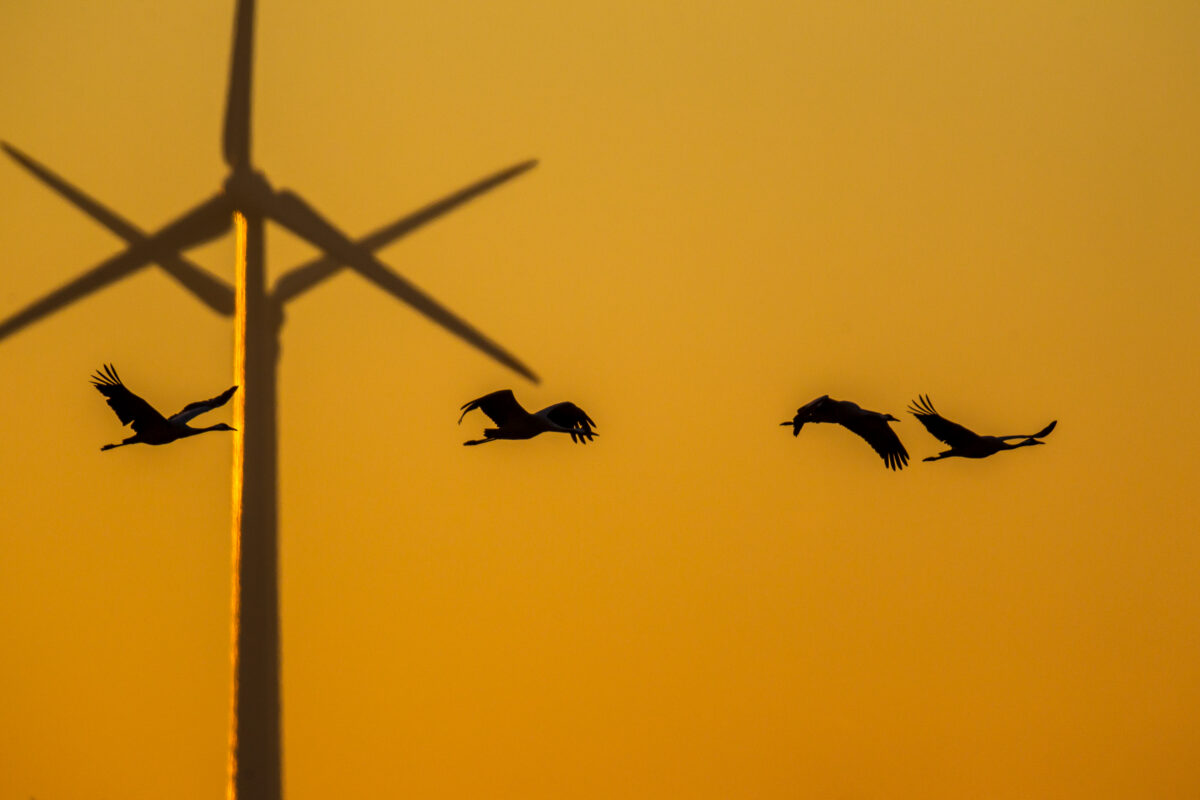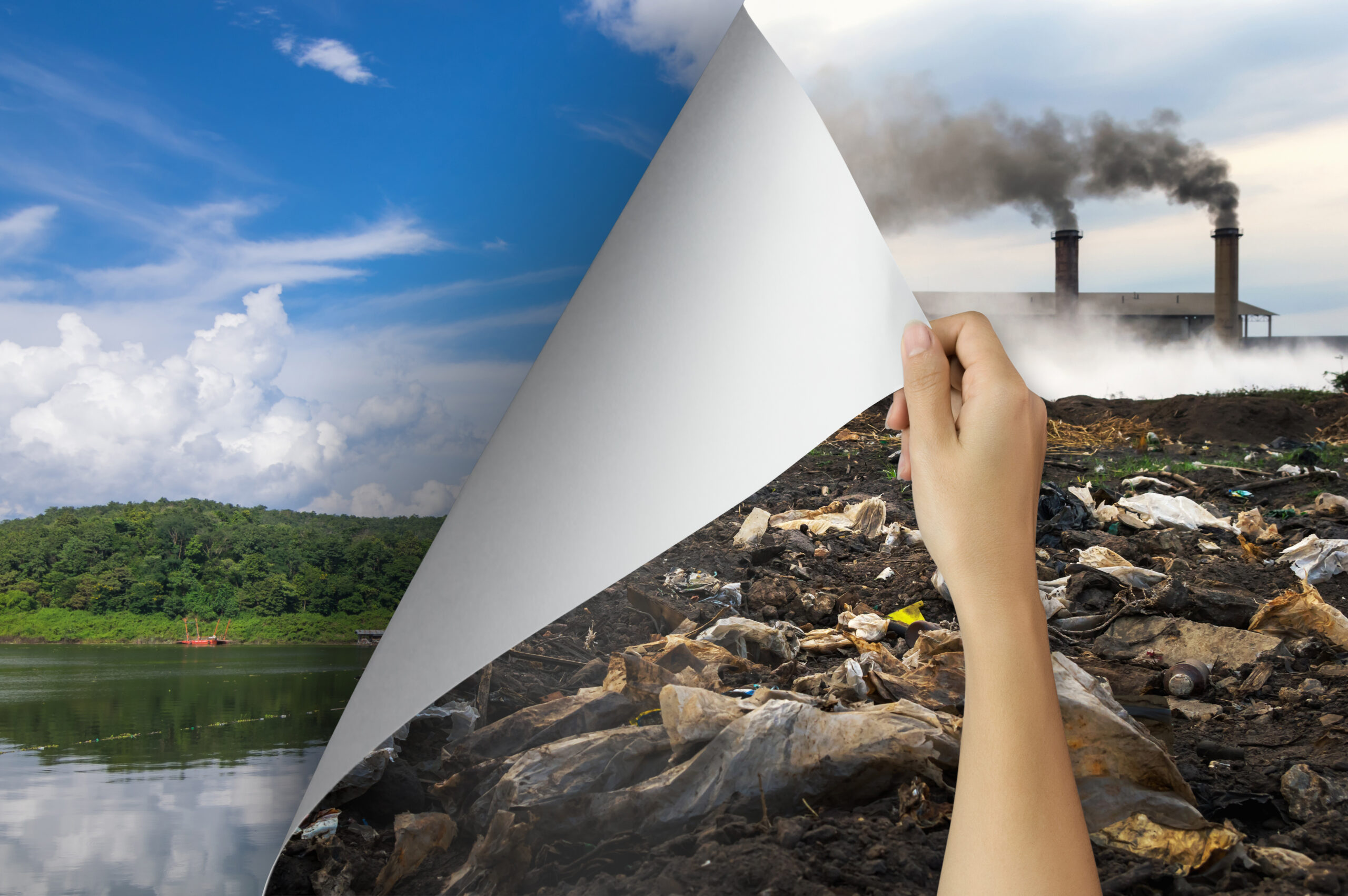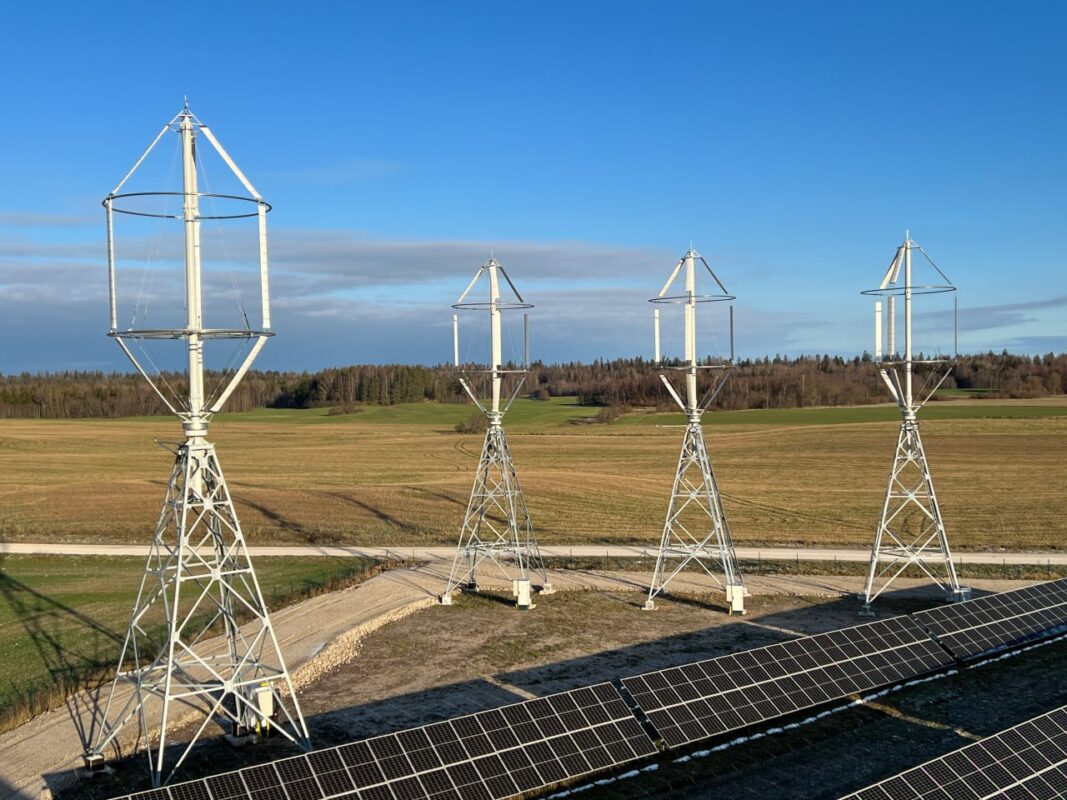People are talking more about wind pollution these days, even though wind ranks among the cleanest ways to generate power. Wind turbines make electricity with minimal harm to the environment compared to fossil fuels. The numbers tell an interesting story – a wind turbine pays back its environmental costs quickly. It takes just three to seven months of operation to generate more energy than what went into making and setting it up.
The story isn’t all positive though. Wind energy does raise some real environmental concerns. Each turbine takes its toll on wildlife, with estimates showing that 6 to 20 bats die at each turbine every year. Wind power plants don’t pollute our air or water, but their presence brings up questions about how we use land, what happens to wildlife, and what they do to the landscape.
This piece looks at whether wind turbines harm the environment or if people just misunderstand them. A closer look at both sides shows how they help create clean energy and what effects they really have on the environment. The goal is to help you learn about wind energy’s role as we move toward renewable power sources.
Are wind turbines bad for the environment or just misunderstood
Wind energy’s environmental footprint remains a hot topic in energy policy debates. Looking at the facts, wind turbines stand out as power sources with the lowest global warming potential for each unit of electricity they generate. Life-cycle global warming emissions from wind energy range between 0.02 and 0.04 pounds of carbon dioxide equivalent per kilowatt-hour. This is nowhere near natural gas (0.6-2 pounds) and coal (1.4-3.6 pounds).
Real concerns exist about certain environmental effects. Wind turbines change how landscapes look and create noise. A turbine’s noise measures about 45 decibels from 300 metres away—just a bit louder than your refrigerator—and you can’t hear them at all from 1.5 kilometres. The turbine blades have killed thousands of birds and bats, which raises wildlife protection issues.
Land usage creates another challenge. Wind farms need more land than other power stations because of their low surface power density. A Harvard University study revealed that large-scale wind farms could raise average surface temperatures across the continental U.S. by 0.24 degrees Celsius. The research team pointed out that “the direct climate impacts of wind power are instant, while the benefits of reduced emissions accumulate slowly”.
Recycling and material considerations
Wind turbines’ sustainability goes beyond how they operate. People can recycle about 85-90% of a turbine’s total mass. Most parts, like foundations, towers, and nacelle elements, follow standard recycling methods. The rotor blades, built from composite materials, pose bigger challenges but can be:
-
- Reused in lifetime-extension projects
- Repurposed into urban furniture such as bridges and playgrounds
- Used in cement manufacturing as replacement materials
Putting impacts in perspective
While wind farms take up large areas, turbines and access tracks only use about 1-2 percent of the land. Farmers can still use the rest of the land for agriculture or other purposes.
Wind turbines pay back their energy investment quickly. After just three to seven months, they produce more energy than it took to make and install them. They then generate clean electricity for the next 20-30 years.
Newer turbine models use far fewer rare earth materials per megawatt than older versions. The industry keeps working to make materials more sustainable.
Understanding wind energy means looking at its complete environmental profile instead of isolated effects. A wind power plant’s construction and transport energy costs equal its new energy output within months. Wind power helps fight climate change since it needs no fuel and creates no air pollution while running.
Smart development means recognising and tackling actual impacts. Good site selection, state-of-the-art technology, and environmental monitoring can minimise negative effects while maximising this renewable energy source’s benefits.

Why are wind turbines bad for the environment: breaking down the criticism
Critics raise specific environmental concerns about wind energy that need a closer look. Wind turbines create unique challenges for wildlife protection, habitat disruption, and community effects that go beyond simple carbon calculations.
Environmental effects of wind turbines on birds, bats, and local ecosystems
Bird and bat collisions stand out as one of the most documented issues with wind energy. Research shows each turbine kills about 4-6 birds yearly in southern Australia. The numbers are worse for bats, with studies finding 6-20 bat deaths per turbine each year. These figures add up to hundreds of thousands of dead birds and nearly a million dead bats across North America annually.
Small bat species face the highest risk when wind speeds are low (2-5 metres per second). This has led to new strategies like changing cut-in speeds. A newer study published in Pennsylvania showed that raising the wind speed where turbines start spinning from 3.5 to 6.5 metres per second cut bat deaths by 93%.
Wind farms can also create big problems for biodiversity through:
-
- Habitat loss and fragmentation
- Disruption of ecological communities
- Soil sealing and erosion
- Road sprawl and carbon stock loss
These effects come from clearing vegetation for tower foundations, internal roads, substations, and sealed surfaces. It’s worth mentioning that while physical infrastructure takes up only 5% of the total wind farm area, the ecological footprint reaches much further. This becomes a bigger issue in forested areas where habitat quality can suffer.
Wind turbine environmental impact: noise, aesthetics, and land use issues
Wind turbines create two types of noise: mechanical noise from moving parts and aerodynamic noise from wind hitting the blades. The sound reaches about 45 dB at 300 metres – like a quiet library. This noise bothers 10-45% of people when it’s louder than 40 dB(A).
Shadow flicker happens when turbine blades cast moving shadows. This only affects buildings within 130 degrees either side of north from a turbine and within 10 rotor diameters of the wind farm. Today’s modern turbines can stop automatically if shadow flicker becomes a problem.
Are wind farms bad or good for the environment: visual and social impact
The way wind farms look remains one of the most debatable criticisms. A survey found about 60% of people thought wind turbines made the landscape look worse. Here’s something interesting – research shows that structures that look almost identical get judged differently based on what people think about them rather than how they actually appear.
Offshore wind farms face similar scrutiny. Studies show even small to medium-sized installations catch people’s attention from up to 16 kilometres away. People can still notice them from almost 29 kilometres away.
Communities accept wind farms based on several factors. People like their surroundings to stay the same and push back against sudden changes. They often see wind farms as unwanted industrialization of farming, forest, and natural areas. While property values near wind farms might drop at first, they usually bounce back to their original levels within 3-5 years.
These criticisms of wind energy point to real environmental trade-offs rather than deal-breaking flaws. Good planning makes a big difference – especially when you place turbines away from sensitive landscapes and wildlife corridors.
Why is wind power bad according to critics and how valid are the claims
People who criticise wind energy make strong arguments that question its environmental benefits. Let’s dissect these criticisms and compare them with scientific evidence to understand wind power’s real environmental impact.
The numbers tell an interesting story. Wind energy produces between 0.02 and 0.04 pounds of carbon dioxide equivalent per kilowatt-hour over its lifetime. That’s way lower than natural gas (0.6-2 pounds) and coal (1.4-3.6 pounds). This gives wind energy a clear edge over fossil fuels when it comes to emissions.
Bird and bat deaths from wind turbines worry many critics. Studies show thousands of these animals die from turbine blade collisions. These concerns make sense, but we need to look at the bigger picture. Fossil-fuel facilities actually kill more birds. Buildings, glass windows, and house cats pose an even bigger threat to bird populations.
The visual effect of wind farms on landscapes bothers many people. They can change the look of scenic areas and heritage sites. The Mountaineering Council of Scotland’s report showed that wind farms hurt tourism in naturally beautiful areas. While this concern comes down to personal taste, it matters to communities that value their unspoiled views.
Noise isn’t as big an issue as some claim. At 300 metres away, turbines make about 45 dB of sound – just a bit louder than your fridge. You can’t hear them at all beyond 1.5 km. Some people say the noise affects their health, but scientific research hasn’t backed up these claims.
Getting rid of old turbine parts creates new challenges. Fibreglass blades last 10-20 years, and until recently, recycling options were limited. Since 2019, landfills have started asking operators to crush blades before disposal. This shows we’re starting to take this issue more seriously.
Land use raises valid concerns. Wind farms sometimes need forest clearing, especially on mountain ridges. Take Scotland – between 2007-2008, developers cleared over 3.4 million trees across 6,202 acres for wind farms. They replanted only 31.5%. This habitat loss and fragmentation needs careful monitoring and management.
Resources needed for wind farms exceed those for traditional power plants. Onshore wind farms need eight times more critical minerals than natural gas plants. Offshore installations need even more – 13 times as much. Mining these materials adds its own environmental footprint.
Here’s what we’ve learned from looking at these criticisms:
-
- People often overstate problems like bird deaths, noise, and local weather effects
- Real challenges exist with permits, rare earth materials, blade recycling, visual impact, and connecting to the power grid
- We can reduce many negative effects by choosing good locations and running turbines smartly
Recent science shows wind energy’s benefits outweigh its environmental costs when done right. A 2020 study found wind projects kill 0.269 birds per gigawatt-hour of electricity, while fossil fuel projects kill 5.18. Wind power’s advantages look even better when you consider climate change might endanger two-thirds of North American bird species.
In a nutshell, wind power plays a vital role in fighting climate change, even though it faces some valid criticisms that need our attention and solutions.
Are windmills bad for the environment or part of the solution
The complete lifecycle of wind energy shows a complex picture of its environmental footprint. Manufacturing makes up about 75% of a wind turbine’s total environmental impact for onshore applications. Installation and operation contribute 15% and 10% respectively. Offshore turbines show different numbers at 65%, 25%, and 10%.
Steel and iron parts are major contributors to acidification and global warming through sulphur, nitrogen oxides, and carbon dioxide emissions. Recycling these metals reduces all impact categories by about 30%. You can recycle 85-90% of a wind turbine’s total mass. This includes foundations, towers, and nacelle components through well-established methods.
Wind turbines produce clean electricity without polluting air or water, with very few exceptions. This key advantage makes them environmentally valuable. A wind plant produces enough new energy within a few months to offset what it took to make and transport its materials.
The industry faces a real challenge with blade disposal. By 2025, the European wind sector expects 66,000 tonnes of composite waste, which is 10% of total thermoset composite waste. The industry aims to ban landfilling of decommissioned wind turbine blades across Europe by 2025. They’ve committed to complete reuse, recycling or recovery of blades.
Life-cycle global warming emissions from wind energy range from 0.02 to 0.04 pounds of carbon dioxide equivalent per kilowatt-hour. These numbers are much lower than natural gas (0.6-2 pounds) and coal (1.4-3.6 pounds). Wind energy helped save 118 million tonnes of CO₂ in Europe during 2019.
Wind energy provides major environmental benefits despite some impacts. It uses almost no water, making it one of the most water-efficient energy sources available. Onshore wind farms use only about 5% of their total area for physical infrastructure. This leaves most of the land free for farming or conservation.
The wind industry keeps improving its environmental performance through:
-
- Resource-efficient material development, including low-carbon steel
- Recyclable composites for blades
- Improved recycling technologies
- Better turbine efficiency
Wind energy plays a crucial role in fighting climate change while keeping environmental trade-offs reasonable compared to traditional energy sources.
Final verdict: are wind turbines bad for the environment or essential for the future
Wind turbines represent both sides of the environmental debate. They offer substantial benefits but also create real challenges. Research shows that wind energy creates very low emissions compared to traditional power sources. These turbines generate more energy than what’s needed to create them within months and continue to provide clean electricity for decades.
We can’t ignore some valid concerns. Birds and bats die from collisions, turbines change how landscapes look, they make noise, and recycling the blades creates problems. But we need to look at these effects in context. Buildings and domestic cats kill far more birds than wind turbines do. Farmers can still use 95% of the land around wind farms. The noise becomes inaudible beyond certain distances.
New technology helps solve these problems. Modern turbines reduce wildlife deaths, and companies now focus on green practises for disposing old components. The industry’s commitment to blade recycling shows they care about long-term sustainability.
The environmental benefits of wind energy outweigh its drawbacks. These turbines don’t pollute air or water while running and barely contribute to climate change compared to fossil fuels. They use almost no water, which becomes more valuable as global water supplies shrink.
Wind energy isn’t perfect, but it’s crucial for switching to sustainable power. Smart placement, new ideas, and careful monitoring can reduce negative effects while maximising clean energy benefits. We shouldn’t blindly accept or reject wind power. Instead, we need thoughtful implementation that realises its full potential while dealing with legitimate environmental concerns.






